1. Adhikari SP, Meng S, Wu YJ, Mao YP, Ye RX, Wang QZ, et al. Epidemiology, causes, clinical manifestation and diagnosis, prevention and control of coronavirus disease (COVID-19) during the early outbreak period: a scoping review. Infect Dis Poverty. 2020; 17(9):29.

2. Kim SW, Su KP. Using psychoneuroimmunity against COVID-19. Brain Behav Immun. 2020; 2020(87):4–5.

3. Park SC, Park YC. Secondary emotional reactions to the COVID-19 outbreak should be identified and treated in Korea. J Korean Med Sci. 2020; 35(17):e161. PMID:
32356422.

4. Rajkumar RP. COVID-19 and mental health: a review of the existing literature. Asian J Psychiatr. 2020; 52:102066. PMID:
32302935.

6. Bao Y, Sun Y, Meng S, Shi J, Lu L. 2019-nCoV epidemic: address mental health care to empower society. Lancet. 2020; 22(395):e37–8.

7. Ho CS, Chee CY, Ho RC. Mental health strategies to combat the psychological impact of COVID-19 beyond paranoia and panic. Ann Acad Med Singap. 2020; 49(1):1–3.
8. Kim JW, Stewart R, Kang SJ, Jung SI, Kim SW, Kim JM. Telephone based interventions for psychological problems in hospital isolated patients with COVID-19. Clin Psychopharmacol Neurosci. 2020; 18(4):616–620. PMID:
33124594.

9. Song HR, Kim WJ. Effects of risk information component of media and knowledge on risk controllability: focusing on infectious disease. Crisisonomy. 2017; 13(6):1–14.
10. Kim Y. Examining social distance against the infected affected by influenza A(H1N1) news use: focusing on the stigma effect. Korean J Journal Commun Stud. 2010; 54(3):206–227.
11. Dohle SC, Siegrist M. Fear and anger: antecedents and consequences of emotional response to mobile communication. J Risk Res. 2012; 15(4):435–446.
12. Yang JE, Kim SJ. Cultural peculiarities and risk perception among Korean people: focusing on the mediating role of emotion and the moderating role of risk types. Crisisonomy. 2016; 12(6):143–160.
13. Ju YK, You MS. Diagnostic or prognostic? analyzing the news framing of H1N1 coverage in Korea. Korean J Journal Commun Stud. 2011; 55(5):30–54.
14. Yoo WH, Chung YK. The roles of interpersonal communication between exposure to mass media and MERS-preventive behavioral intentions: the moderating and mediating effects of face-to-face and online communication. Korean J Broad Tele. 2016; 30(4):121–151.
15. Lee DH, Kim JY, Kang HS. The emotional distress and fear of contagion related to Middle East respiratory syndrome (MERS) on general public in Korea. Korean J General Psychol. 2016; 35(2):355–383.
16. Park HK, Kim SH, Yang JA. The effects of exposure to MERS information and issue involvement on perceived information influence, disease prevention and information sharing. J Media Econo Cul. 2016; 14(3):7–48.

17. Kim M, Park IH, Kang YS, Kim H, Jhon M, Kim JW, et al. Comparison of psychosocial distress in areas with different COVID-19 prevalence in Korea. Front Psychiatry. 2020; 11:593105.

18. Nickell LA, Crighton EJ, Tracy CS, Al-Enazy H, Bolaji Y, Hanjrah S, et al. Psychosocial effects of SARS on hospital staff: survey of a large tertiary care institution. CMAJ. 2004; 170(5):793–798. PMID:
14993174.

19. Spitzer RL, Kroenke K, Williams BW, Löwe B. A brief measure for assessing generalized anxiety disorder: the GAD-7. Arch Intern Med. 2006; 166(10):1092–1097. PMID:
16717171.
20. Curran PJ, West SG, Finch J. The robustness of test statistics to non-normality and specification error in confirmatory factor analysis. Psychol Methods. 1996; 1(1):16–29.

21. Hong SH. The criteria for selecting appropriate fit indices in structural equation modeling and their rationales. Korean J Clin Psychol. 2000; 19(1):161–177.
22. Wang Z, Gantz W. Health content in local television news. Health Commun. 2007; 21(3):213–221. PMID:
17567253.

23. Glik DC. Risk communication for public health emergencies. Annu Rev Public Health. 2002; 28(1):33–54.

24. Reynolds B, Seeger MW. Crisis and emergency risk communication as an integrative model. J Health Commun. 2005; 10(1):43–55. PMID:
15764443.

25. Krewski D, Turner MC, Lemyre L, Lee EC. Expert vs. public perception of population health risks in Canada. J Risk Res. 2011; 15(6):601–625.

26. Herek GM, Caitanio JP, Widaman KF. HIV-related stigma and knowledge in the United States: prevalence and trends, 1991–1999. Am J Public Health. 2003; 92(3):371–377.

27. Son AR, Moon JS, Shin SB, Jeon SS, Kim SR. Discriminatory attitudes towards person with HIV/AIDS (PWHAs) among adolescents in Seoul, Korea. Health Soc Sci. 2008; 23(1):31–56.
28. Asmundson GJ, Taylor S. How health anxiety influences responses to viral outbreaks like COVID-19: what all decision-makers, health authorities, and health care professionals need to know. J Anxiety Disord. 2020; 71(1):102211. PMID:
32179380.

29. Dong L, Bouey J. Public mental health crisis during COVID-19 pandemic, China. Emerg Infect Dis. 2020; 26(7):1616–1618. PMID:
32202993.

30. Vindegaard N, Benros ME. COVID-19 pandemic and mental health consequences: Systematic review of the current evidence. Brain Behav Immun. 2020; 89:531–542. PMID:
32485289.

31. Jin HJ, Han DH. Interaction between message framing and consumers' prior subjective knowledge regarding food safety issues. Food Policy. 2014; 44(1):95–102.

32. Rousu MW, Huffman E, Shogren JE, Tegene A. Effects and value of verifiable information in a controversial market: evidence from lab auction of genetically modified foods. Econ Inq. 2007; 45(3):409–432.

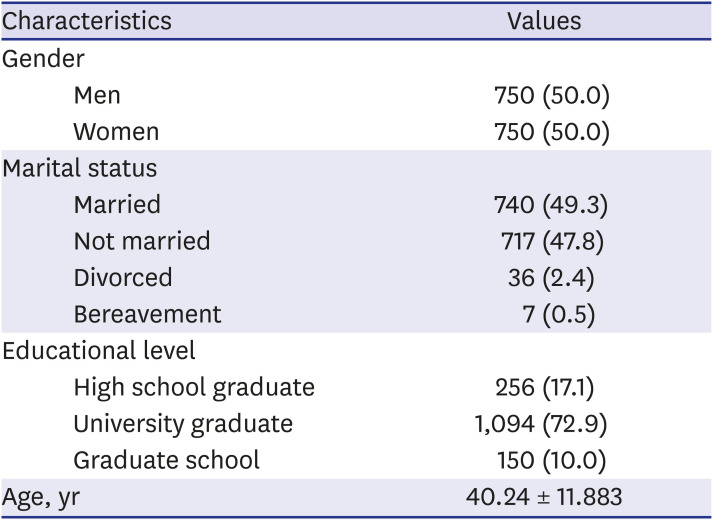
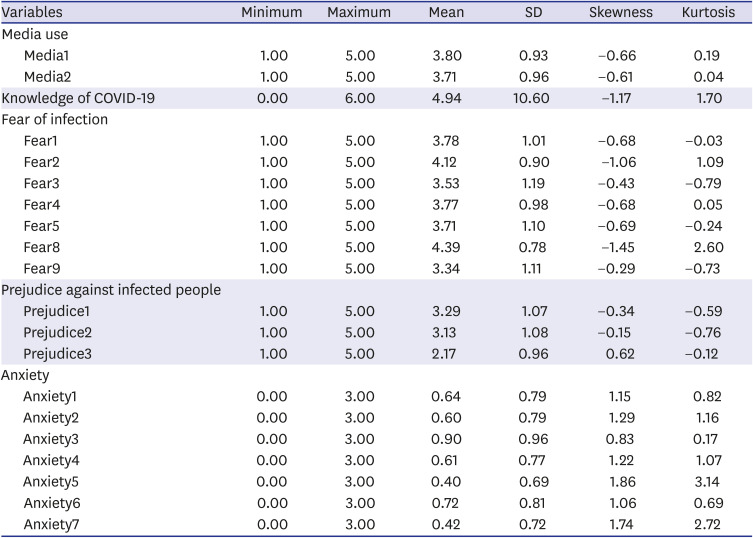
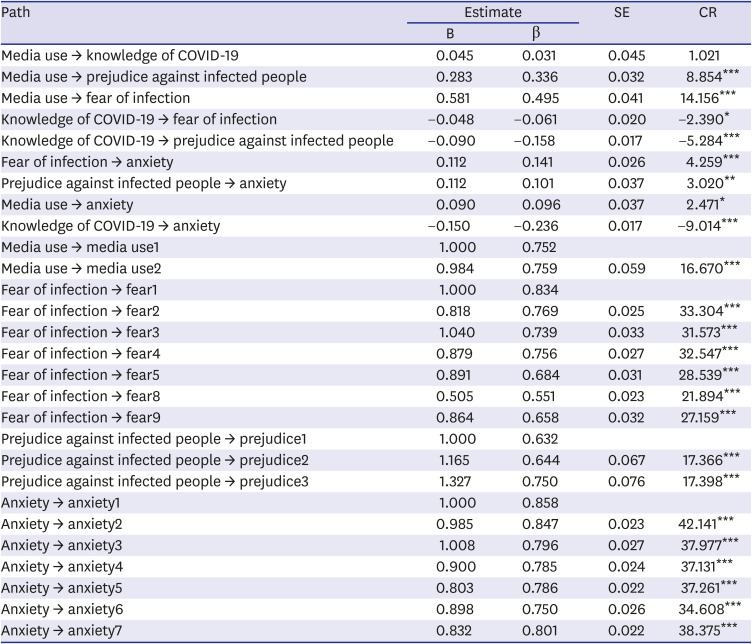
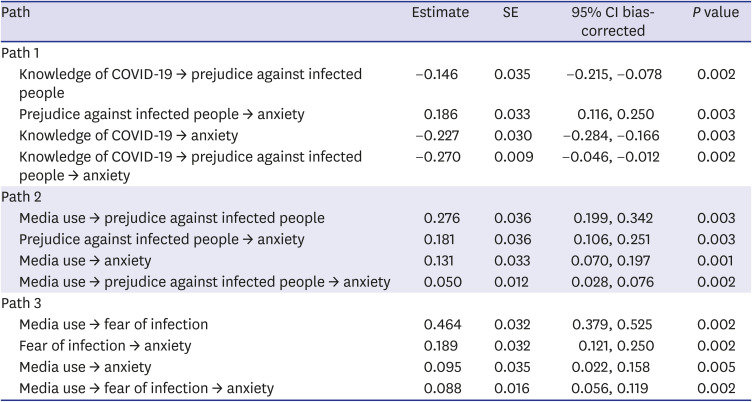




 PDF
PDF Citation
Citation Print
Print



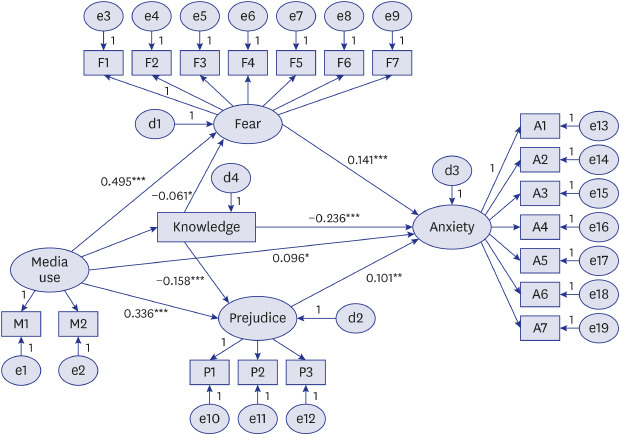
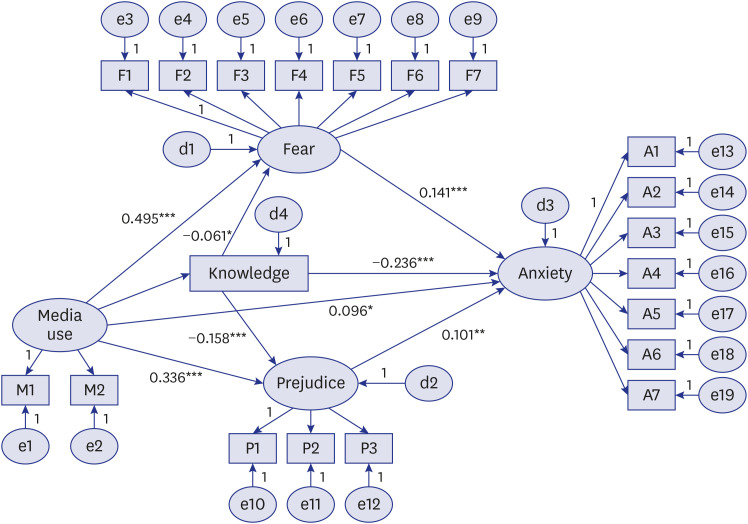

 XML Download
XML Download